Kaonde (kiiKaonde) is a Bantu language spoken primarily in Zambia but also in the Democratic Republic of the Congo. Kaonde and its dialects are spoken and understood by perhaps 350,000 people or more. It is estimated that approximately 2.3% of Zambians are native Kaonde speakers. Kaonde speakers overwhelmingly live in the Northwestern and parts of Central regions of Zambia.

Chingola is a city in Zambia's Copperbelt Province, the country's copper-mining region, with a population of 216,626. It is the home of Nchanga Copper Mine, a deep-shaft high-grade content copper mining operation, which subsequently led to the development of two open pit operations, Chingola Open Pit and then Nchanga Open Pit.
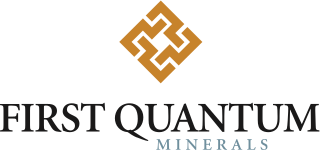
First Quantum Minerals is a Canadian-based mining and metals company whose principal activities include mineral exploration, development and mining. Its main product is copper, which accounts for 80% of revenues as of 2016.
Mufulira is a town in the Copperbelt Province of Zambia. Mufulira means "Place of Abundance and Peace". The town developed around the Mufulira Copper Mine in the 1930s. The town also serves as the administrative capital of Mufulira District.
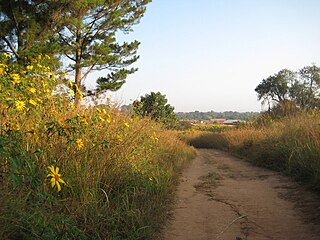
Mwinilunga is a town in the North-Western Province of Zambia. It is the headquarters of Mwinilunga District, one of the province's eleven districts.

The Copperbelt is a natural region in Central Africa which sits on the border region between northern Zambia and the southern Democratic Republic of Congo. It is known for copper mining.
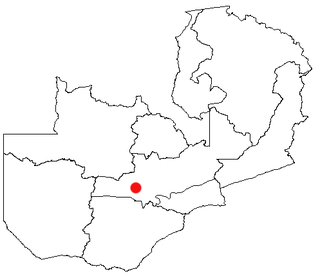
Mumbwa is a town in the Central Province of Zambia, lying on the M9 Road. Its district covers the western part of the Central Province bordering Kaoma and Western Province to the west, Namwala and Southern Province to the south, Lusaka and Lusaka Province to the east, Kasempa and North-Western Province to the north and Kabwe to the north-east. It is known for its cotton and has a ginnery. The Zambia Air Force has a base in the district. Kafue National Park borders the district to the west. The predominant tribes are the Ila, who speak a dialect known as Sala, mostly to the south and south east and the Kaonde to the north. The Lenje are to the north-east on the border area with Kabwe. There are also relatively large settlement of people from the west and north west such as the Lozi, Nkoya and Luvale, Shona people from the then Southern Rhodesia who settled there as refugees from the civil war in that country and who are now almost integrated and Tonga from the south. A lot of prospecting for minerals such as copper and gold was done in the district and small scale mines operated there. Most are now closed, though the gold mine at Luiri has been revived.
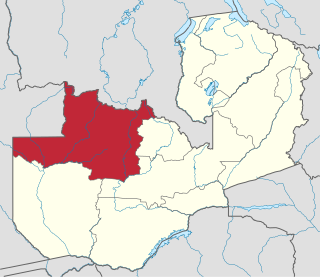
North-Western Province is one of ten Provinces of Zambia. It covers an area of 125,826 km2 (48,582 sq mi), has a population of 1,278,357 and a population density of 20 per square kilometre as of 2021. It is the most sparsely populated province in the country. The provincial capital is Solwezi. The literacy rate stood at 63 per cent in 2010 against a national average of 70.2 per cent. The rural population constituted 77.45%, while the urban population was 22.55%. North-Western Province is bordered along Angola in the west, the Democratic Republic of Congo in the north, Copperbelt Province in the east, Central in the south-east, and Western Province in the south-west.

Solwezi Airport is an airport serving Solwezi, a city in the North-Western Province of Zambia. The airport is the largest in the province and was upgraded by Kansanshi Mining PLC with the addition of a new runway able to handle the Boeing 737. Prior to the runway being upgraded there was a small 1200 meter runway not able to handle large aircraft, but with the upgrade of the runway after the mining boom, Proflight Zambia was able to deploy the British Aerospace Jetstream 41 to Solwezi. Also, the newly revived national carrier, Zambia Airways, has begun service from Lusaka to Solwezi utilizing a Dash 8-400.
Equinox Minerals is a mining and exploration company with corporate offices in Perth, Australia and Toronto, Ontario, Canada. It has operations in Peru and Australia. In Zambia it owned the Lumwana Mining Company, but that was bought by Barrick Gold in 2011. Through Liontown Resources Limited and Alturas Minerals Corp., the company has gold and copper-gold exploration interests in Peru and Australia. The Lumwana project which had enough reserves to be productive for 37 years, cost the company one billion dollars to develop. In Zambia it has been credited with supporting social development through projects which aim to build schools, attract professionals to areas around its mine sites. 2010 copper production was 323.4 million pounds 68% higher than in 2009.
Mutanda is a town in Kalumbila District, North-Western Province, Zambia. It is approximately 33 kilometres (21 mi), by road, southwest of Solwezi. Mutanda is situated approximately 500 kilometres (310 mi), by road, northwest of Lusaka, the capital.
'Lumwana is a mining town located in Mwinilunga District, within the North-Western Province of Zambia.
Kansanshi mine is a large copper and gold mine located in Solwezi in the North-Western Province of Zambia. The mine is approximately 14 kilometers north the town of Solwezi. Kansanshi is one of the largest copper reserves in Zambia, with estimated reserves of 727 million tonnes of ore graded at 0.86% copper.
Chambishi is a town in Kalulushi District in the Copperbelt Province of Zambia. According to the 2021 Census its population stands at slightly above 11,000. It is located on the T3 road between the cities of Kitwe and Chingola.
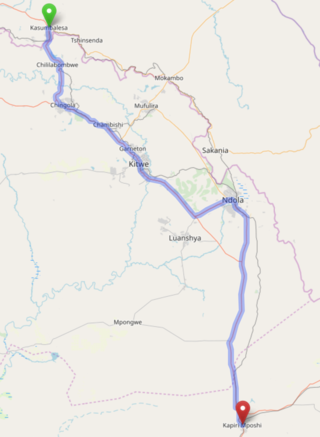
The T3 is a Trunk Road in Zambia. The road runs from Kapiri Mposhi via Ndola, Kitwe and Chingola to Kasumbalesa on the border with DR Congo. The entire route is a toll road.

Kalumbila District is a district of North-Western Province, Zambia. It was named after a mine of the same name and was made independent from Solwezi District In 2016.
Kalumbila Mine is a copper mine in Kalumbila District, North-Western Province, Zambia. It was formed in 2010 and is one of the four copper mines in Zambia. As of 2018, it was the fourth largest mining employer in Zambia with 11 000 workers. Kalumbila is also the name of the town where the mine is situated.
The T5 is a trunk road in Zambia. It connects Chingola in the Copperbelt Province with Solwezi and Mwinilunga in the North-Western Province. The route extends to end at the Jimbe border post with Angola. It is the only other road after the M18 road that connects the towns of the North-Western and Copperbelt provinces and is currently the main route motorists use to reach Angola from Zambia. The section of the road from Chingola to Mutanda is a toll road.
The M8 road is a road in the North-Western Province of Zambia. It connects Mutanda in Solwezi District with Zambezi Town via Mufumbwe, Manyinga & Kabompo.










